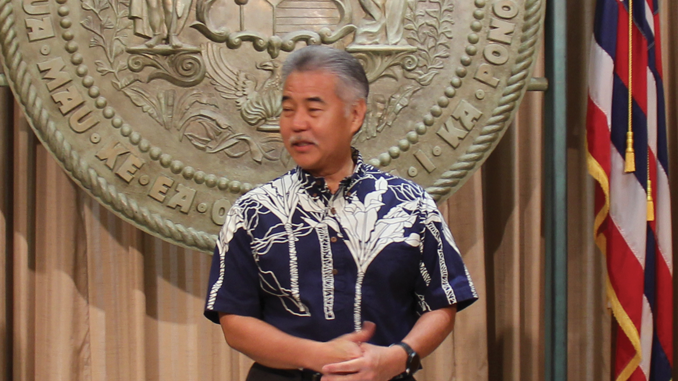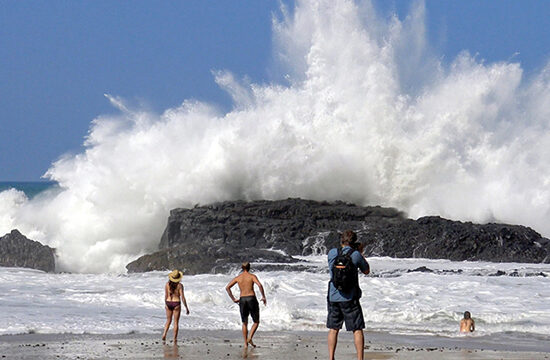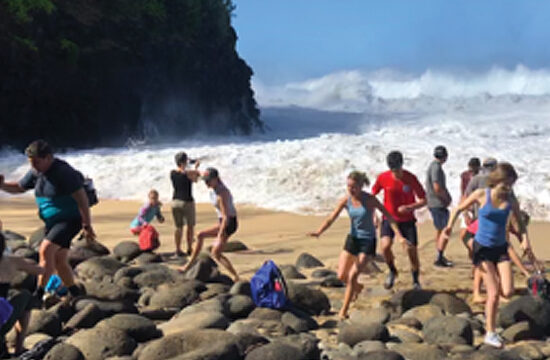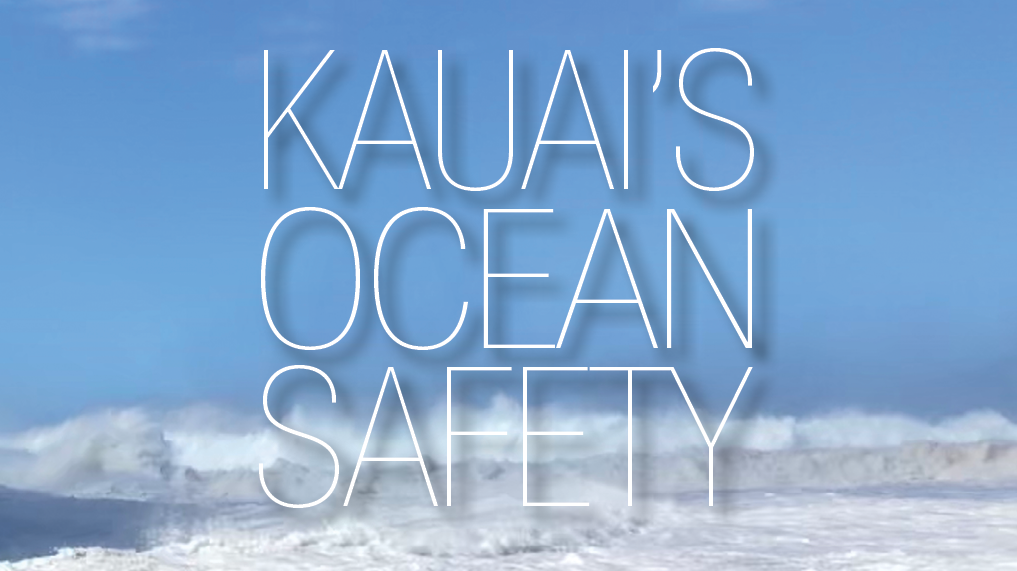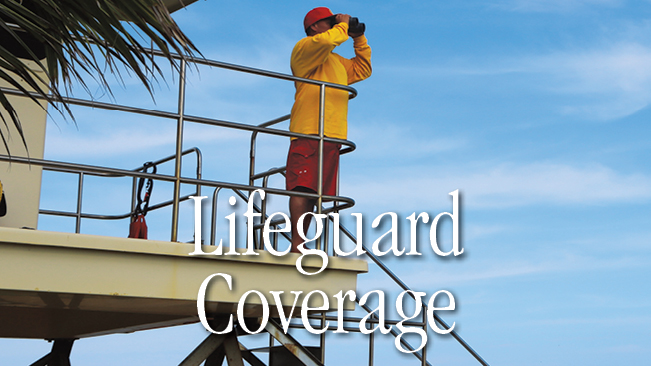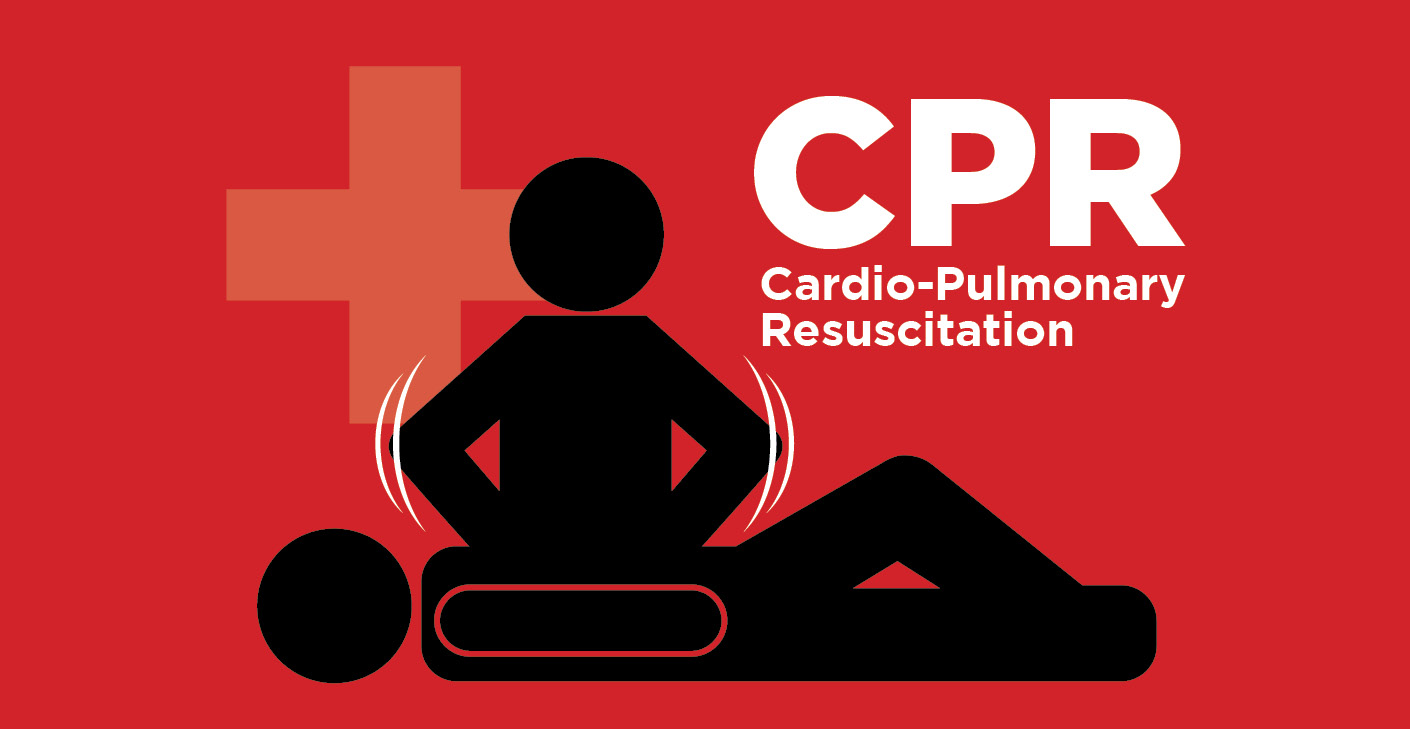
This will be an unusual North Shore winter on Kauai because, at least as things stand now, there will be many many fewer people at our beaches north of Hanalei. Some of these beaches are the ones I worry about most during our fabled winter surf swell conditions. (E.g. Both ends of Lumahai, Tunnels, YMCA camp area.) No one yet knows when the Haena road will again become 2 lanes so that people (and visitors) can visit these beaches. And when the road does become 2 lanes again, how many people will be allowed to access the area?
Meanwhile, there are still the 2 operational Lifeguard Towers north of Hanalei, namely Haena Beach Park and Ke’e. These have been kept open because there still are people who live in Haena, and they of course deserve to be guarded when they go to the beach, just as they were in the era before the April 14th flood.
Meanwhile there are many beaches from Hanalei southwards that will be heavily populated by visitors and residents alike. We always recommend the guarded beaches — Hanalei in the North District, and moving southwards and westward to Anahola, Kealia, Lydgate, Poipu Beach Park, Salt Pond, and Kekaha.
Reading this list, you don’t have to be a local person to start naming off many many beaches that are not guarded. I hesitate to start naming them since our #1 message really is “Please swim at guarded beaches.” It’s a ridiculously idealistic message to the point where you might wonder why we even bother to say it. Well, we say it because it’s true and it might save your life one day. Our Lifeguards (#1) can give you advice about the beach conditions (and there are times when they will simply tell you “Please don’t swim here today, I recommend you go to a Southshore beach”); and (#2) they can rescue you if you do find yourself needing help.
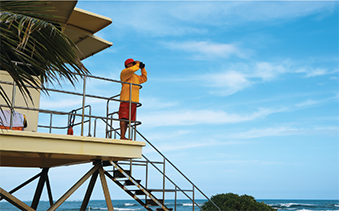
More recent history tells us that there may be someone at the beach who is competent to grab either their own surfboard, or one of our public rescue tubes (PRT’s), and who can venture out to you and stabilize you. Once that is achieved, you may be helped back to shore by your rescuer, or you may hang out, hold onto the floatation device, and wait for professional help to arrive on scene.
All of these unguarded beach scenarios depend on you, the would-be victim, not panicking. As long as you don’t panic there is time for the rescue plan to develop. If you do panic, your situation can deteriorate drastically and terribly in a matter of seconds.
History tells us that with our 911 system and our Jetski’s, a Lifeguard may still get to the scene and save you.
I will, reluctantly, specifically mention a couple of unguarded areas. The first is Anini, and I mention it because it has become so popular. It’s a long beach, mostly protected by an outside barrier reef and therefore can remain calm near the beach even during North swell conditions. However, even with the guarding reef, you need to know that water will be coming over the reef, and when water comes in, it will find a way to equilibrate, i.e. to go back out. This means that there are rip currents, that is there are areas where an outgoing river can grab hold of you and can take you out beyond your comfort zone — if not into the reef-breaking waves themselves. When our Ocean Safety Bureau is fully staffed, we frequently have a Lifeguard roving patrol team hanging out at Anini, and in fact they have been responsible for several critical saves. Unfortunately, a number of our Lifeguards are on short term Medical Disability so that our force is short-staffed and they have been unable to rove to Anini for a couple of months. I very much hope that this situation will resolve itself in the near future.
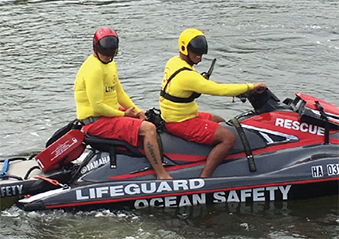
(We have a number of other such Angels who maintain our PRT stations on other Kauai beaches/areas and I’ll be mentioning them in future pieces).
So, those are some of my thoughts for this winter season. My happiest and best thought comes your way when I say have a Great and Safe Holiday Season, on land or on our beaches or in the ocean.

